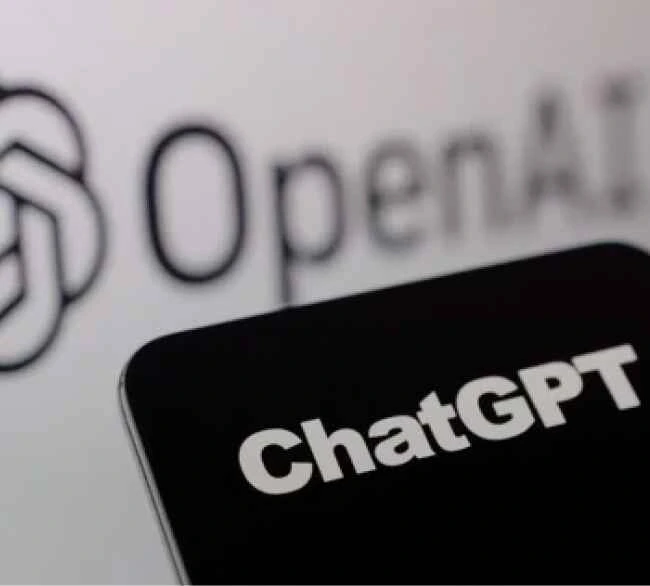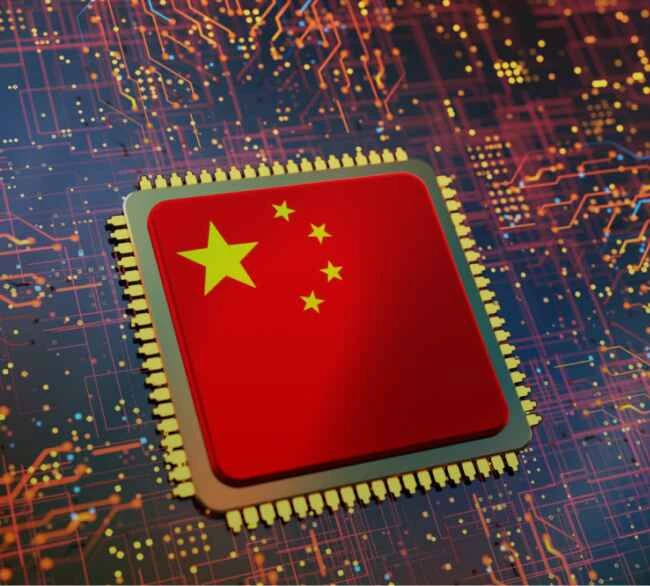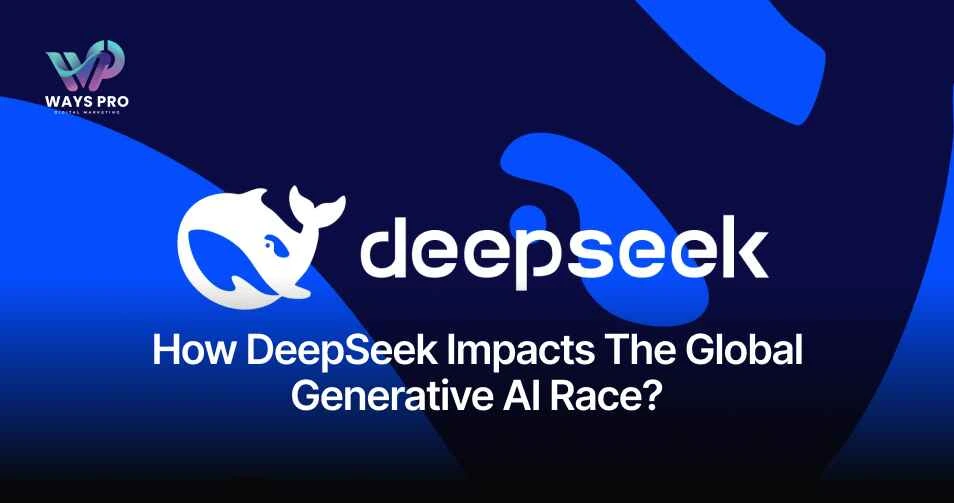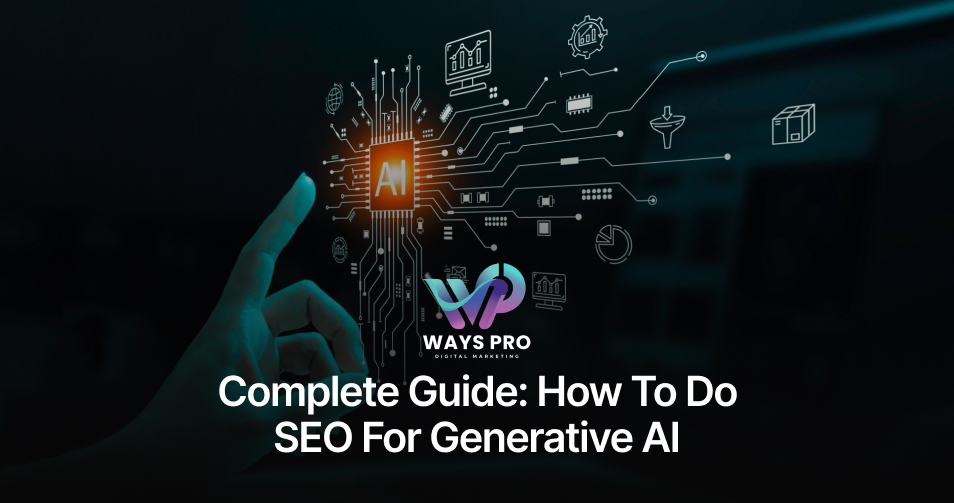Our world is experiencing a new tech revolution every day, and at the same time, China again proved its leading position in the tech industry by introducing DeepSeek as a New Year’s gift of 2025.
However, the robustness DeepSeek has hit the market is provoking various questions.
For example,
Is the AI landscape about to change forever? With OpenAI and Google dominating generative AI, can a new contender truly shake things up?
The open-source AI system made by China continues to expand its presence in a market expected to reach $1.3 trillion during 2032. The growing popularity of DeepSeek battles will reshape how people access technology while changing market competition and worldwide innovation efforts. Does this development empower the industry or create new geopolitical tensions?
In this blog, we’ll explore how DeepSeek is challenging tech giants, advancing open-source AI, and reshaping the future of AI worldwide.
Challenging OpenAI and Google

Such days seem to have become history when people used to appreciate and prefer OpenAI, ChatGPT, and Google Search. A publication by Business Today also backs this, though, declaring DeepSeek a new rival of other AI platforms and tools. Experts also say that DeepSeek has various features and strengths that OpenAI and Google Search do not even have yet.
We all have been with Google and its amazing tools and applications so far. However, consumer preference can shift towards accessibility, sturdiness, and cost-effectiveness. DeepSeek’s achievement of acquiring 1.8 million daily active users are a clear sign of this theory.
On commercial grounds, DeepSeek is also giving both OpenAI and Google a tough time. It can be seen across China’s tech ecosystem where companies prefer to partner, adopt, and integrate DeepSeek into their technologies rather than the other two platforms.
For example:
- Integration into Tencent’s Weixin (China’s largest messaging app).
- Integration into Baidu (China’s dominant search engine).
- Integration with major Chinese corporations (including Great Wall Motors and top telecom providers).
DeepSeek is Also Outperforming Outside China:
- Expanding to Global Research Communities: The open-source nature of DeepSeek’s models has attracted researchers working outside China.
- Growing Adoption in International AI Startups: Many worldwide companies have tested DeepSeek as a cost-effective method for integrating AI systems.
- Recognition in Open-Source AI Communities: Outside Chinese developers are contributing to DeepSeek models and discovering innovative uses for these models.
Let’s take a closer look at Open-Source AI & DeepSeek.
Advancing Open-Source AI

Open-source AI refers to AI models, tools, or frameworks developed and made available for public use and modification for better results. It contributes to encouraging fresh ideas, sharing information, and fostering partnerships, thus enhancing the speedy progression of artificial intelligence in various fields and groups.
DeepSeek contributes substantially to open-source AI by developing models that match the capabilities of commercial industry leaders. With the R1 model, DeepSeek demonstrates equal performance capabilities through basic hardware and minimal resource needs. Its innovative Mixture-of-Experts (MoE) approach, in combination with engineering innovation, triggers only particular network components for specific tasks, thus reducing the power required for computational processes.
DeepSeek improves AI development speed and advanced technology accessibility by sharing its models as open-source code. This strategy has enabled technological adoption, enabling widespread developer engagement.
Although the open-source method enables collaboration, it generates problems because software security risks exist, along with business income stabilization matters. DeepSeek’s commitment to transparent collaboration creates a paradigm shift in the AI market by enabling diversity alongside quick technological innovation.
It is a transparent sign of China’s AI ambitions for revolutionizing the tech ecosystem. Let’s dive deeper into it!
China’s AI Ambitions

China is making substantial investments and strategic moves to establish itself as a worldwide AI leader. The AI market in China generated more than 213 billion yuan during 2023, marking an incremental expansion from 2016 figures.
Under Chinese government policies, AI upholds a strong status as a strategic priority industry designed to deliver innovation improvements alongside reduced technology imports from abroad. The government has demonstrated its dedication through the creation of venture capital funds that have invested $912 billion since 2010 to aid 1.4 million AI-related firms with 23% of their total capital.
These investments have enabled the development of a thriving Chinese AI Tigers which includes startups, such as Baichuan AI, MiniMax, and Zhipu AI now have capital values between $1.5 billion and $2 billion.
China’s ambitious move towards adopting AI technologies does two things:
- It boosts up country-made AI advancements
- Alongside creating tougher global competition that changes how the international AI field looks.
Boosting Competition and Innovation
New AI models and platforms have generated intensified competition, which drives innovation across the worldwide AI industry. The Chinese generative AI models, including DeepSeek, launched recently generated widespread impact across the tech sector because they displayed the country’s speed of innovation and competitive ambition.
This competitive environment compels companies to continuously innovate, enabling them to create enhanced algorithms that support multiple applications and deliver economical solutions. The AI market worldwide is expected to expand by 27.67% annually from 2025 to 2030, reaching $826.70 billion by 2030.
This expansion signifies the AI industry’s fast-paced and dynamically evolving characteristics because competition drives both technological progress and capabilities expansion.
Deepseek for Digital Marketers
DeepSeek, in the context of the global generative AI race, can be an influential tool for digital marketers. As generative AI technologies evolve and become more integrated into various industries, they offer significant opportunities for digital marketing innovation. Here’s how DeepSeek could be pivotal in leveraging generative AI for digital marketing:
Content Creation:
DeepSeek can help automate and enhance the content creation process by generating high-quality relevant images, and videos and help in content writing. This not only speeds up content production but also ensures that it is optimized for SEO and engagement based on deep learning insights.
Personalization at Scale:
By understanding individual user behaviours and preferences, DeepSeek can enable marketers to craft personalized marketing messages at scale. Generative AI can create customized content for different segments of a market, enhancing the relevance and effectiveness of marketing campaigns.
Real-time Adaptation:
In the fast-paced digital world, consumer trends and preferences can change rapidly. DeepSeek can analyze real-time data and adjust marketing strategies instantaneously, using generative AI to modify content, ads, and campaigns to align with current trends.
Enhanced User Experiences:
DeepSeek can help in creating more interactive and engaging user experiences. For example, AI-driven chatbots and virtual assistants can provide personalized customer service and support, improving user engagement and satisfaction.
Predictive Analytics and Forecasting:
By harnessing the power of machine learning, DeepSeek can predict future consumer behaviours, market trends, and campaign outcomes. This allows marketers to prepare more effective strategies and allocate resources more efficiently.
Automation of Repetitive Tasks:
DeepSeek can automate routine and time-consuming tasks such as data analysis, campaign monitoring, and report generation. This frees up marketers to focus on more creative and strategic aspects of their work.
Ethical and Compliance Considerations:
As generative AI technologies develop, ensuring ethical usage and compliance with data privacy laws becomes crucial. DeepSeek can help monitor and ensure that all generative AI applications in marketing adhere to these guidelines, protecting both the brand and its customers.
In summary, DeepSeek can play a crucial role in the global generative AI race by enabling more efficient, personalized, and innovative digital marketing strategies, all while ensuring adherence to ethical standards and regulations.
Expanding AI’s Global Reach

Artificial intelligence has emerged as one of the most promising technologies in the current generation, and its application is widely adopted in many organizations. In 2024, around 72% of companies adopted AI at least in one organizational function, including service and manufacturing industries. This is due to factors such as efficiency, AI’s ability to create innovations, and competitive advantage.
Today, manufacturing, healthcare, and finance industries use AI for prediction, personalized client relations, and management improvement. Also, there have been advances in AI technologies’ accessibility, which means that SMEs can now employ solutions that are exclusive to large companies and enterprises.
Cloud-based solutions and network availability mean more organizations are unlocking AI to draw more strategies. AI is a rapidly growing field of technology that is predicted to experience further globalization shortly, affecting different aspects of human life and business.
At the same time, there are some challenges & concerns that DeepSeek faces in the industry.
Challenges and Concerns:
As more users begin registering and utilizing DeepSeek, its growth introduces certain issues that should be considered. These range from market entry restrictions to ethical problems. This paper aims to outline opportunities and threats linked with DeepSeek’s appearance in the global AI generative race. The following are some of the potential challenges and concerns regarding its development.
Data Privacy and Security:
Just like any other AI platform, DeepSeek analyses massive data, so issues of privacy and security are likely to arise. Some questions arise on data governance, data transparency, and how DeepSeek complies with China’s laws regarding data control when it is outside its home market.
Bias and Ethical Issues:
AI bias seems to be a constant problem, and DeepSeek is not immune to it. As it is designed to work with Chinese language data and Chinese sources, doubts arise concerning its perspective and relevance to worldwide information needs. If DeepSeek is to enforce fair competition with giants like OpenAI and Google, it may lack appropriate diverse datasets.
Regulatory and Compliance Barriers:
Other challenges can be seen in the weaker regulatory laws in the developed world, such as those in the EU and the US. Ensuring GDPR compliance is crucial, but it may pose an issue regarding its adoption worldwide. For instance, several countries have banned DeepSeek mainly because of the invasion of privacy.
- For example, South Korea’s data protection authority blocked new downloads of DeepSeek, claiming that doing so violates personal data protection laws.
- Similarly, New York and Virginia have prohibited DeepSeek from being installed on government equipment due to surveillance and data security concerns.
Market Acceptance and Trust:
Despite the huge potential for AI investments, many worldwide companies are still reluctant to adopt Chinese solutions owing to government interference and issues of IP theft. However, if DeepSeek is to gain credibility in the global markets, the company needs to be more open and willing to collaborate with other parties.
Market Impact:
DeepSeek entered the AI market & has challenged existing players through cost-effective models, which caused significant market disruption. DeepSeek released R1 in January 2025, whereas the model delivered performance equivalents to top AI systems while costing cutthroat prices, which subsequently caused considerable market drops. DeepSeek’s entrance into the market caused Nvidia’s stock value to decrease by 17–18% as investors started to worry about the business’s forthcoming competition.

Due to this market disruption, major technology companies are restructuring their AI approaches through efficiency and cost-saving measures. DeepSeek’s latest model releases created new market opportunities for AI adoption in multiple sectors because organizations desire better performance at reduced costs. The coming change will make AI accessible to more companies, creating innovative opportunities for smaller businesses to compete with each other.
Rapid growth in DeepSeek creates market equilibrium concerns because it could trigger a competition-based pricing decline among AI service providers. Organizations must find ways to combine affordable prices with stable business strategies to preserve long-term success.
Overall, we see an optimistic yet complex future regarding DeepSeek and the global tech market. Here’s a closer look at it.
Future Prospects and Risks:
The innovative method DeepSeek uses makes it an impressive competitor in the AI sector. The company’s open-source AI models are expected to drive worldwide AI adoption at a faster pace while building an open and inclusive technological partnership ecosystem. DeepSeek’s accessible AI solutions have the potential to expand the industries and regions that can implement AI capabilities, thus propelling economic growth and technological advancement.
DeepSeek encounters multiple barriers that threaten to influence its forward direction. Global political tension between the US and China can create issues with regulation and problems gaining market access. The United States has displayed potential concerns about Chinese AI advancements, which might trigger additional regulatory oversight.
Additionally, the rapid pace of AI development necessitates continuous innovation and adaptation. We believe that DeepSeek needs to devote resources to research and development to preserve its market positioning and address moral problems, including data protection problems alongside algorithmic, systematic errors. If DeepSeek does not handle upcoming challenges well, it will face limitations that could constrain its entry into international markets.
Final Thoughts
We can see that DeepSeek has established itself as a key player in artificial intelligence, thus changing the technological domain by upsetting traditional standards and bringing new possibilities. Its low-priced open-source AI models will help people from different backgrounds access AI technologies, which will generate innovative competition. DeepSeek’s sustained success will depend heavily on its capability to handle political disputes, regulatory obstacles, and moral inquiries successfully.
You should stay informed about artificial intelligence’s transforming nature to keep up with industry advancements. At WaysPro Tech, we share the most recent insights with you alongside current developments in artificial intelligence technology. Connect with us and keep getting valuable information about the latest technologies and artificial intelligence developments.








